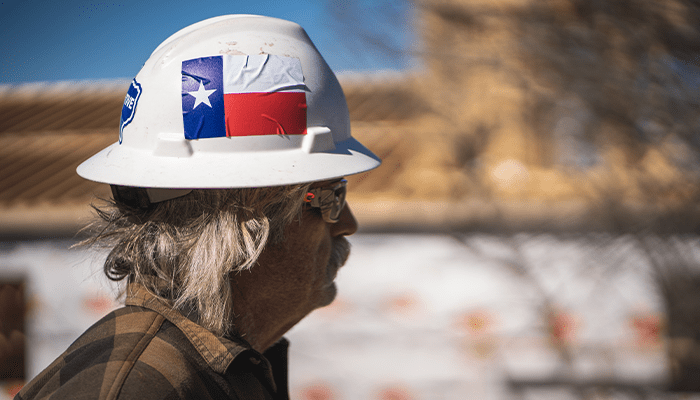
National Emphasis Program or COVID-19 Emergency Temporary Standard?
Issuing an Emergency Temporary Standard (ETS) for COVID-19 was a prospect that President Biden had eluded to throughout his campaign. Many were surprised when he did not immediately issue an ETS but instead issued an Executive Order to OSHA, requiring them to evaluate the need for an Emergency Temporary Standard and issue such standard by March 15, 2021. That deadline has come and gone, and the White House has indicated that OSHA, “is taking the time to get it right.”
Instead OSHA issued an Executive Order outlining a National Emphasis Program for COVID-19. The National Emphasis program intended to inform employers and workers in most workplace settings outside of healthcare to assist them in identifying risks of being exposed to and/or contracting COVID-19 at work.
What Workers Need to Know About COVID-19 Protections in the Workplace
- The best way to protect yourself is to stay far enough away from other people so that you are not breathing in particles produced by an infected person – generally at least six feet (about two arm lengths), although this is not a guarantee, especially in enclosed spaces or those with poor ventilation.
- Practice good personal hygiene and wash your hands often. Always cover your mouth and nose with a tissue when you cough or sneeze or use the inside of your elbow and do not spit. Monitor your health daily and be alert for COVID-19 symptoms (e.g., fever, cough, shortness of breath, or other symptoms of COVID-19).
- Face coverings are simple barriers to help prevent your respiratory droplets or aerosols from reaching others. Not all face coverings are the same; the CDC recommends that face coverings be made of at least two layers of a tightly woven breathable fabric, such as cotton, and should not have exhalation valves or vents.
- The main function of wearing a face covering is to protect those around you, in case you are infected but not showing symptoms. Studies show that face coverings reduce the spray of droplets when worn over the nose and mouth.
- Although not their primary value, studies also show that face coverings can reduce wearers' risk of infection in certain circumstances, depending upon the face covering.
- You should wear a face covering even if you do not feel sick. This is because people with COVID-19 who never develop symptoms (asymptomatic) and those who are not yet showing symptoms (pre-symptomatic) can still spread the virus to other people.
- It is especially important to wear a face covering when you are unable to stay at least six feet apart from others since COVID-19 spreads mainly among people who are in close contact with one another. Wearing a face covering does not eliminate the need for physical distancing or other control measures (e.g., handwashing).
- It is important to wear a face covering and remain physically distant from co-workers and customers even if you have been vaccinated because it is not known at this time how vaccination affects transmissibility.
- Many employers have established COVID-19 prevention programs that include a number of important steps to keep workers safe – including steps from telework to flexible schedules to personal protective equipment (PPE) and face coverings. Ask your employer about plans in your workplace
Many have speculated that an ETS would mirror Virginia’s state requirements or even California’s state requirements for a written COVID-19 response plan. The plan would be required to address the steps the employer has made and continues to make to protect employees. It is expected the federal standard will include specific requirements for employers in certain industries like restaurants, retail, food processing and healthcare. At a minimum, employers should be doing the following:
• Assigning a workplace coordinator
• Identifying where and how workers might be exposed to COVID-19 at work
• Identifying a combination of measures that will limit the spread of COVID-19 in the workplace, in line with the principles of the hierarchy of controls
• Considering protections for workers at higher risk for severe illness through supportive policies and practices
• Establishing a system for communicating effectively with workers—and in a language they understand
• Educating and training workers on COVID-19 policies and procedures while using accessible formats and a language they understand
• Instructing workers who are infected or potentially infected to stay home and isolate or quarantine
• Minimizing the negative impact of quarantine and isolation on workers
• Isolating workers who show symptoms at work
• Performing enhanced cleaning and disinfection after people with suspected or confirmed COVID-19 have been in the facility
• Providing guidance on screening and testing
• Recording and reporting COVID-19 infections and deaths
• Implementing protections from retaliation and setting up an anonymous process for workers to voice concerns about COVID-19-related hazards
• Making a COVID-19 vaccine or vaccination series available at no cost to all eligible employees
• Not distinguishing between workers who are vaccinated and those who are not—all should continue to follow protective measures
• Complying with other applicable OSHA standards
Even if a temporary standard is passed, OSHA will most likely continue to utilize the General Duty Clause to enforce safety and health in the workplace. In order to issue a citation under the General Duty Clause OSHA must prove the following:
- Condition or activity in the workplace presented a hazard
- Employer or its industry recognized the hazard
- Hazard was likely to cause death or serious physical harm a feasible means existed to eliminate or materially reduce the hazard
In the case of COVID-19, it will be nearly impossible for employers to feign ignorance and not understand that COVID-19 exposures in the workplace are a real hazard that has been recognized throughout the US for the last year and contracting COVID-19 may cause death or serious physical harm for some people.
Other standards that OSHA can consider when inspecting a workplace are:
- 29 CFR § 1904, Recording and Reporting Occupational Injuries and Illnesses.
- 29 CFR § 1910.132, General Requirements - Personal Protective Equipment.
- 29 CFR § 1910.133, Eye and Face protection.
- 29 CFR § 1910.134, Respiratory Protection.
- 29 CFR § 1910.1200, Hazard Communication.
- 29 CFR § 1910.141, Sanitation.
- 29 CFR § 1910.1030, Bloodborne Pathogens.
- 29 CFR § 1910.145, Specification for Accident Prevention Signs and Tags.
- 29 CFR § 1910.1020, Access to Employee Exposure and Medical Records.
Employers should continue to evaluate their workplace, conduct updated PPE hazard assessments (with updated certification statements) and follow their own recommendations as a result of those hazard assessments.
Under the new administration it is expected that OSHA’s budget will double which will increase the number of OSHA inspections with the focus on COVID-19 in the workplace. This would include any potential COVID-19 cases that could be deemed “work-related.” Documented investigations into each COVID-19 case to determine if the employee believes they contracted COVID-19 in the workplace, investigating the employee’s out-of-work activities where there could have been potential exposure, quarantine dates and reasons (exposure in-house or from outside the workplace) and confirmed COVID-19 diagnosis.
Fourteen states have already approved and are enforcing Emergency Temporary Standards for COVID-19 and across the country many of the items that would be included in an ETS are already being enforced by the states. These requirements include masking, training, social distancing, enforcing hygiene and reporting cases to their local health departments.
For questions on this information, contact your local AssuredPartners office or our team of energy specialists.
Featured News & Insights

In New Mexico, proposed changes to the plugging and abandonment (“P&A”) bonding requirements are a hot topic across the oil and gas industry. While these changes may be intended to reduce the number...

The Occupational Safety and Health Administration (OSHA) sets the standards for ensuring safe and healthful working conditions across the United States. But when an OSHA citation lands on your desk,...

Texas is unusual in that most private employers can choose not to participate in the state's workers' compensation system. These employers are called non-subscribers. Since they operate outside the...